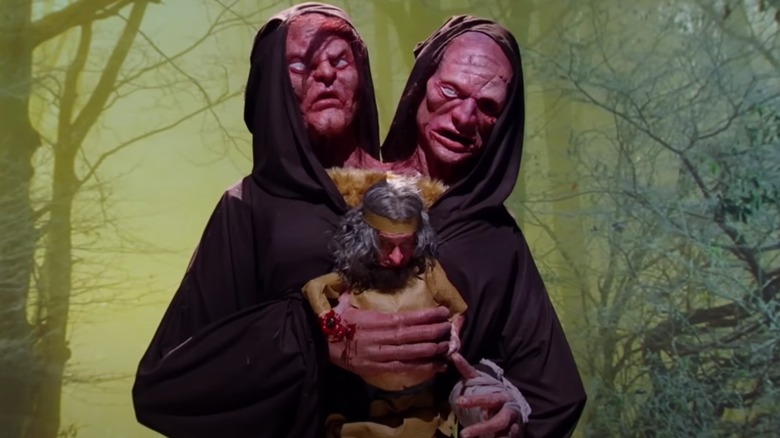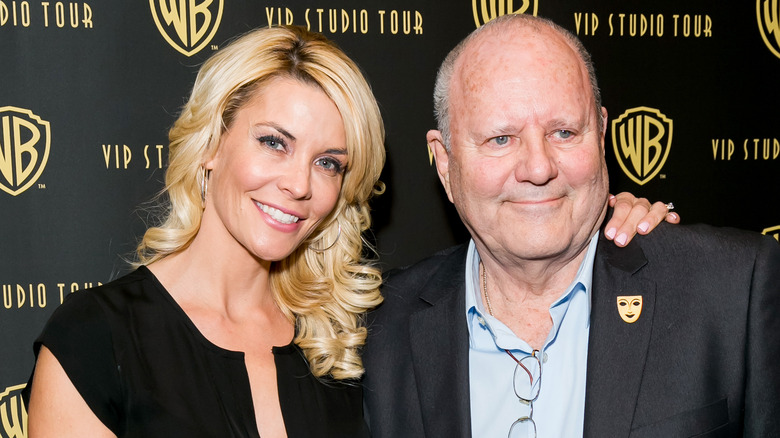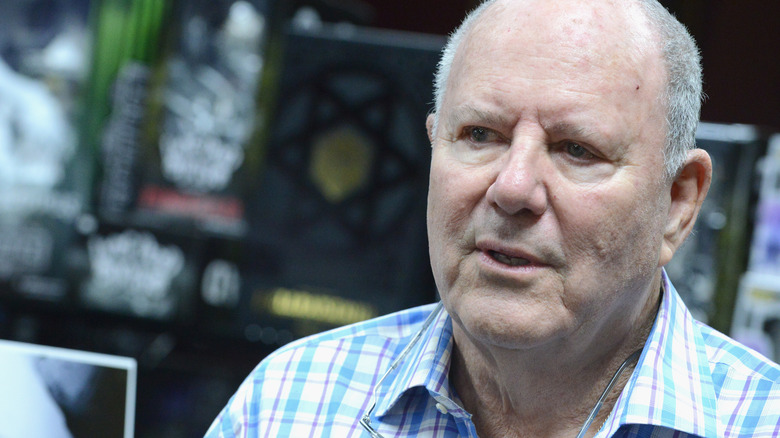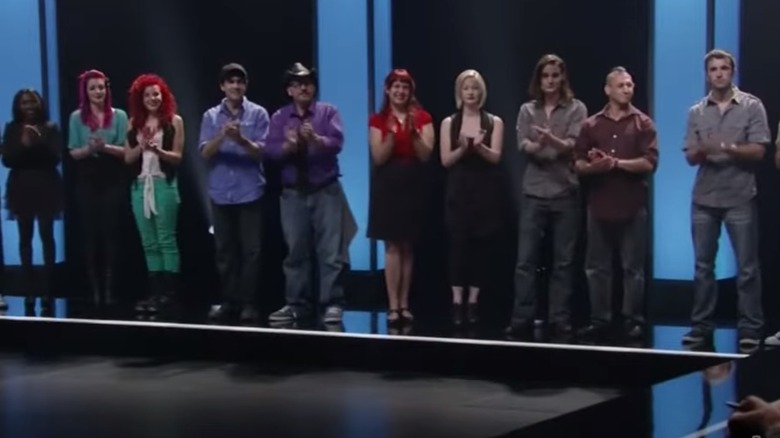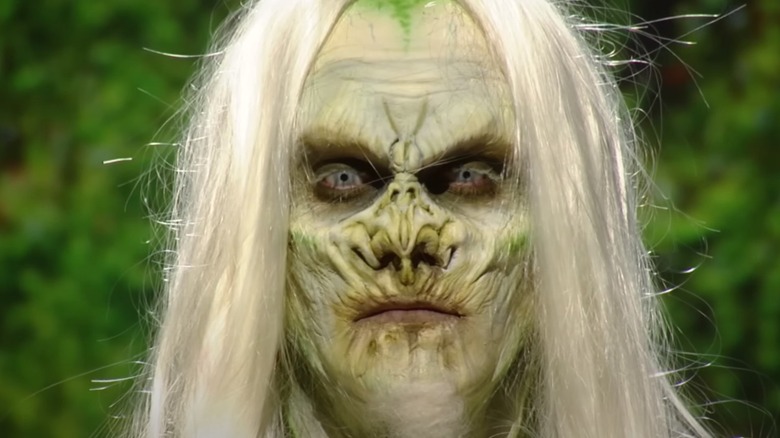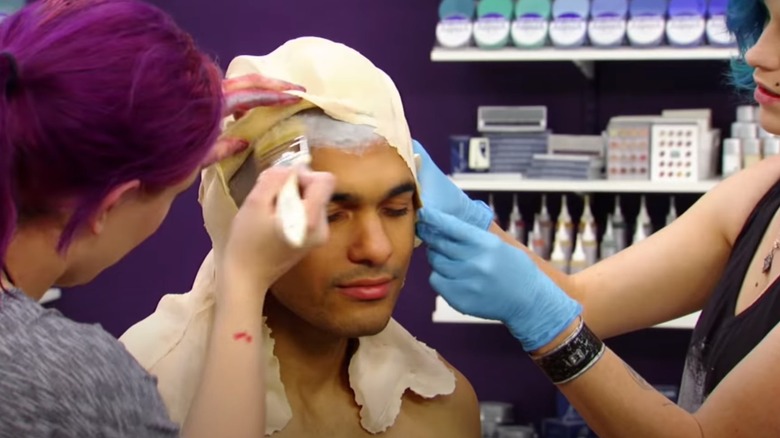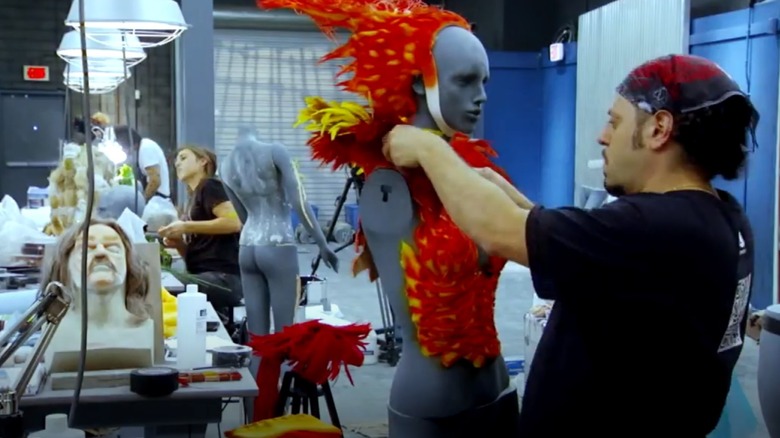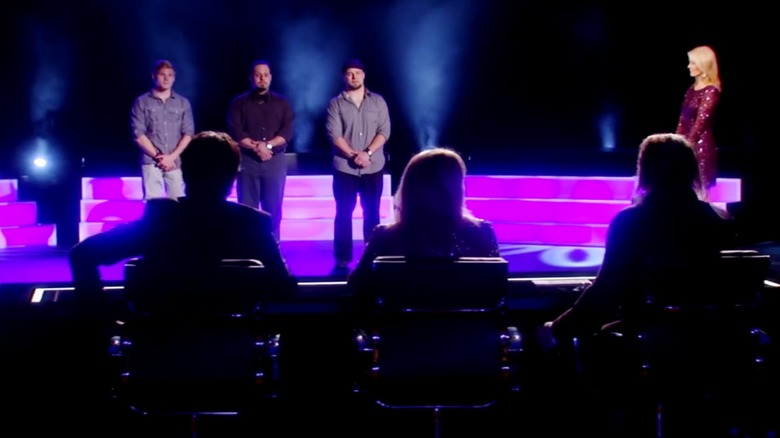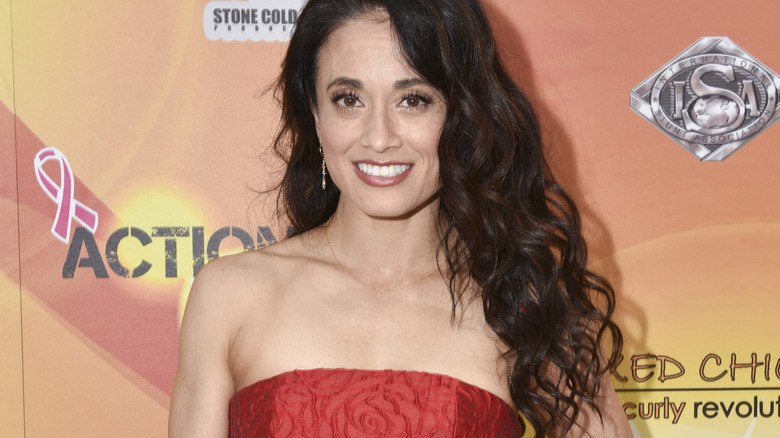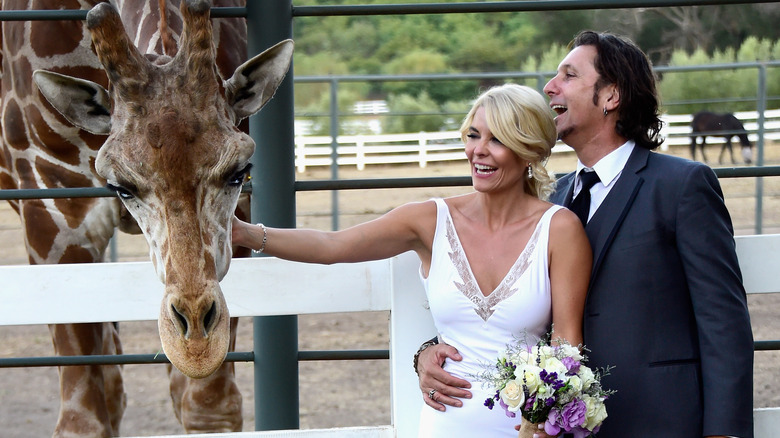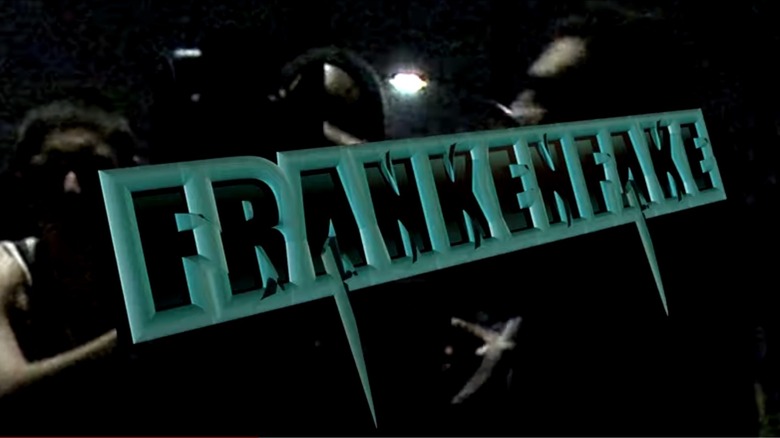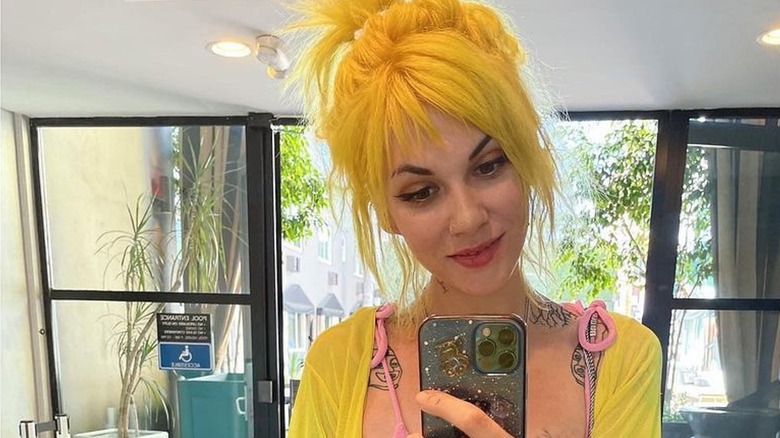The Untold Truth Of Face Off
Not all reality shows are created equal, and for every one featuring hidden cameras that capture the worst moments of a person's life and extreme situations designed to break participants into a million tiny, vulnerable pieces, there are some shows that are, well, pretty brilliant. They're the kind that spotlights artists and craftspeople creating incredible things under incredible pressure, and one of the best shows out there for that was "Face Off."
"Face Off" ran for 13 seasons on Syfy, and when it was canceled, fans made it clear that they weren't saying goodbye without a fight. Thousands of people petitioned the network to try to get them to reconsider, and while that didn't work, it did help the show's powers that be get through the tough news. When executive producer Dwight D. Smith spoke with Reality Blurred, he said, "The outpouring of support and passion from our fans has been incredible."
He also said that there was no real reason given for the show's cancellation, aside from the fact that ratings were down. That, however, was a given for a lot of shows: The more options that are out there, the thinner viewers are spread. He also acknowledged that it was tough to find contestants with the skills at the levels needed, but added that he didn't feel like it was really and truly over. Will it come back? It's unlikely, but let's look at some of the secrets of the seasons we were fortunate enough to get.
The Westmore family has generations of experience
McKenzie Westmore obviously hosts the show and that's her father, Michael, who's mentoring contestants. They've talked quite a bit about their experiences in the industry, and regular viewers probably know that he's the SFX pro who has been widely lauded for helping to shape the way "Star Trek" has looked on-screen. But that's actually just part of the story, and their entire family is wildly talented. Michael's brother, Marvin? He's an artist too — and he worked on "Blade Runner." His other brother, Monty, was the go-to makeup artist for stars like Paul Newman and Joan Crawford, and he also worked on modern classics like "Jurassic Park."
Now, let's go back a generation to their father, Mont, and his brothers. Mont Westmore settled into a regular job with David O. Selznick, while his twin brothers, Percival and Ernest, ran the makeup department at the studio that would later become Warner Brothers and RKO/20th Century Fox... respectively. Another brother, Walter, was the head of Paramount's makeup department, and yet another — Hamilton — was overseeing things at Universal.
It was their father who started the whole thing: George Westmore was born on the Isle of Wight in 1879, and before emigrating to the U.S., he was Winston Churchill's barber. After settling in Los Angeles in 1917, the soldier-turned-hair stylist founded the entertainment industry's first studio makeup department, worked with all the big names of the silent movie era, and ultimately died by suicide in 1931.
All contestants get a pre-show class with Michael Westmore
Michael Westmore might be one of the most well-known and influential makeup artists in Hollywood's recent years, but he didn't always intend to end up in the family business. He told The Herald-Times that he was an art history major with dreams of branching out into archaeology when his uncle — who worked at Universal during their monster-movie heyday — offered him an internship. The rest is, as they say, history.
When Westmore appears on "Face Off," he's typically giving artists advice, suggestions, compliments, and insight. It turns out that there's more the cameras don't see — or at least, that audiences don't see — including a pre-season class he gives to contestants before they even start. What's he cover? Specifically, he gets into the common mistakes that people make with their molds and sculpts: "There are major mistakes that new people make. I made all of those mistakes."
He knows just how valuable tips from the professionals can be. When Entertainment Weekly asked him who had inspired him, he name-dropped one of the most prolific SFX and makeup artists in Hollywood: John Chambers. Anyone who doesn't immediately recognize the name will know his work — "Planet of the Apes," and Spock's ears for "Star Trek." Westmore studied with him for three years, and here's a fun tidbit: Chambers also worked with the CIA to help them set up a fake movie studio during the Iranian hostage crisis.
Contestants were shockingly secluded
"Face Off" took a surprisingly long time to film. According to what host McKenzie Westmore said (via The Huffington Post), a single episode could take up to four days to film. With around 10 to 12 episodes in most seasons, it's safe to say that contestants are in it for the long haul. While that's a long time to be away from friends and family, that's not all they're away from.
When Kris Kobzina spoke with Entertainment Weekly for his season's wrap-up, he revealed the extent to which contestants were secluded: "They take our cell phones away from us. They don't want us watching anything, no online because they don't want us to draw inspiration from anything, and so they kind of shut us off from the world. So no TV, no phones, no Internet, no outside communication, no newspapers, no books, nothin'." If that sounds hard, it is: Fellow contestant Anthony Kosar confirmed that the isolation and lack of an outside support system was an emotional struggle.
Contestant Stella Sensel has also spoken about the isolation and told the New York Post that they were only allowed to venture outside of the house they were in if someone from the production went with them. But it was also a bonding experience: "We had to rely on each other for entertainment. We made up a lot of games, played children's games like hide and seek, used Monopoly money to play poker."
Models put in long days for surprisingly low pay
The models are the unsung heroes of "Face Off," and if it looks like they have an incredibly challenging job, that's because they do. They're tasked with bringing the artists' designs to life, and when Reality Blurred spoke with show models Matt Chris Wood and Isabelle Du, they were honest about the fact that it was a tough job with long hours — and for surprisingly low pay.
The pay rate was plucked from a 2014 casting call, and it specified that depending on what was going to be going on any given day, they would be paid $150 or $200. While that might be acceptable for an 8-hour work day, they weren't working just 8 hours. In fact, they were expected to be on set before dawn, all to start getting ready.
Although it typically takes four hours to get all the makeup and prosthetics applied, that's just part of the day. There's also the hour-long presentation and judging, shooting the promo photos, the reveal, the trip on the bus to get to the stage, and the challenges of eating and drinking with all that makeup on. And bathroom breaks? Depending on the design, that just might not be possible... for the entire day. Then, there's the performances and finally, the clean-up, which can take a long time, too. (Wood's longest make-up removal took about four hours.) All that means they're looking at a 13- to 20-hour day.
Models definitely influence the design
One of the coolest parts of "Face Off" is seeing the morphosis from model to creature, and for anyone wondering if artists ever look at the model they're partnered with and have all their ideas go right out the window, yes: It happens, sometimes with devastating consequences.
When Entertainment Weekly conducted their exit interview with Daniel Philips, he lamented the fact that he had been the last artist to be assigned a model for a dragon challenge, and when he found himself needing to transform a female model instead of a male one, he struggled. "I really wanted it to be a huge male because I'm thinking, 'Dragons. Big monster guy.' I had to re-evaluate my make-up when I got back to the studio and started sculpting. That threw me off a little bit."
Fan favorite Alana Schiro also spoke about the difficulties her model presented, and told Entertainment Weekly that she thought it was part of the reason she was sent home. In addition to problems with the challenge and her partner, Schiro said, "What also made me realize that I was going to go home was that we got a male model and both Laney [Parkhurst] and I are very feminine [artists]. We're all about expressing ourselves through the art, so it was difficult to bring ourselves into this male character." She went on to say that the model — along with the other circumstances that unfolded throughout the challenge — put her in a bad mental space that led to her elimination.
The behind-the-scenes crew is most of the budget
Reality TV isn't just a hit with viewers, it's a hit with studios, too — in large part because it's generally cheaper to produce and more profitable in the long run. That said, there's still a lot that goes into a show like "Face Off," and according to what producer Dwight D. Smith told Reality Blurred, the show actually has a pretty hefty budget because of the materials that need to be made available to the artists and the lab they're presented with. And they don't cut any corners, either.
"[The artists] usually lose their minds when they get loose in the lab," he said. "They don't have the resources to have the breadth of materials we have in that lab." And while that's one of the most fascinating parts of the show, it's not the only work area — there's another, and even though it's an invaluable part of the process, it's never seen on the show. What is it? An entire wardrobe department that's scrambling to put the costumes together at the same time the artists are working on their makeup.
Initially, Smith said the intention was to have it featured on the show, but when it came time to put together the first season for broadcast, the entire department ended up on the cutting room floor. Since the judges never took costuming into consideration when choosing winners and losers, it made sense not to spend valuable screen time there.
Eliminations are really, really hard
One of the refreshing things about "Face Off" is that it doesn't push conflict between contestants. Many say they stay in touch after the show, and that they genuinely get along even while they're in the thick of things. That means when people inevitably get sent home, it can be incredibly hard on the ones that remain in the competition, too.
When Entertainment Weekly spoke with Bethany Serpico about her elimination, she said that not only was she fighting back tears as she heard the judge's verdict, but her fellow competitor was, too. "When I got eliminated, of course, I was all teary-eyed and sappy and I looked over and I saw Tess [Laeh] crying, too. I was like, 'Why are you crying?' She was just so upset that I was leaving because we'd become kind of close."
Margaret Caragan also spoke to EW about how eliminations impacted everyone and confirmed that even early goodbyes were difficult ones. She said that everyone tended to feel like they were all in it together, they were all trying to create something spectacular, and they all had a shared artistic background that meant camaraderie from the beginning. Caragan said that she decided, "I will not complain. I will not whine. You're standing there ready to take the heat. You just accept it and move forward... but for Matt, it was instant depression because it could have been him. ... You don't know what's going to happen next."
They were on the receiving end of a severe injury lawsuit
While Syfy's "Face Off" might not be the first show that comes to mind when the conversation turns to dangerous reality shows, it's not without risks. For starters, there's always the potential for a severe allergic reaction. And it's happened: RJ Haddy was in the middle of creating his take on a senior citizen when his model had a reaction to the materials, and it sent him back to the drawing board.
According to one lawsuit, the dangers are even greater than that. Syfy was hit with a personal injury lawsuit over a 2012 incident where model and stuntwoman Tamiko Brownlee was allegedly hurt in a stunt gone wrong. The claim — which no longer seems to be available online in full — said (via Reality Blurred) that Brownlee said she was "surrounded and consumed by a fireball... [and] did not know, was not advised, did not consent, assume and/or agree to participate... in said television production... where her person and/or body would be and/or run the risk of being burned."
While the outcome of the case isn't clear, Brownlee did speak about the incident in an interview with the San Antonio Express-News. She said the accident left her with second- and third-degree burns, and she ended up needing multiple skin grafts. She went on to return to work in the industry, but it wasn't easy: "It took a lot of persistence, [but] I'm pretty stubborn. I made myself get past it."
McKenzie Westmore married one of the judges
It's impossible to tell when you're going to meet your new best friend or next love interest, and McKenzie Westmore's story is a heartwarming reminder of that. When she got married on October 11, 2015, it was to former "Face Off" judge Patrick Tatopoulos. According to what she told Reality Blurred, though, it wasn't exactly love at first sight.
Westmore says that Tatopoulos — who was a judge on the first two seasons of "Face Off" — didn't show up on set when filming first started. "I wasn't told the full story of what happened," she said. "I thought it was just that he didn't want to show up, and so I thought, 'Okay, this guy has a massive attitude, and I didn't like him. And so I never really talked to him because of that."
It wasn't until they started the second season that she found out he hadn't shown up because his contract hadn't been finished, and they also found out that they'd run into each other before, when she was a teenager accompanying her parents to a party. Even stranger, there was another family connection: Michael Westmore won an Emmy for design work he'd done for "Star Trek: The Next Generation." He didn't do the physical construction of the alien he won the award for, though, so who had made the physical piece? Patrick Tatopoulos.
One contestant lashed out at the show in a big way
First things first: The general consensus is that "Face Off" isn't scripted. Many of the contestants have spoken about the camaraderie that comes with the work: Seventh-season contestant Stella Sensel told the New York Post that when it comes to the nastiness that often comes with reality TV, she didn't see any of that for a simple reason: "We all genuinely like each other. We're actually creating art. We don't have time for [being cutthroat]."
Sensel explained further that because the industry is so small, contestants are aware of the likelihood that they'll run into each other again. And that's important context for Joe Castro's story. He rage-quit season three's first episode, and later told Pop Horror that he'd seen it was rigged, and "I didn't want to be a part of a fake competition." He continued: "It was almost career suicide for me. I didn't work for four years after that. They tried to silence me."
Castro released a documentary called "Frankenfake," and in the press release for the film, he promised to reveal the legal documents that he'd been forced to sign, and talk about claims that the show's producers even withheld his medication from him. Castro's partner in that first episode had a different take on it. Tommy Pietch later told Entertainment Weekly, "I don't think he's ever been judged before. I don't think anyone had ever actually critiqued him. He didn't want to get judged."
One former contestant died at a tragically young age
When Laney Parkhurst voluntarily left the show during season five, it was pretty shocking stuff. People sign on to a reality competition show to win, after all, and in her exit interview with Entertainment Weekly, she said that it hadn't just been homesickness that made her bail. "I started feeling guilty for being there," she explained. "The people that they brought on this show, the veterans, [they were] the reason I joined this show. I had always rooted for those people. I wanted to see them win on their seasons."
At the time, it seemed as though the show had given her a massive boost in the field. She was already booking jobs with Universal Studios and Rob Zombie's drummer and would go on to work in music videos with artists like Marilyn Manson.
Tragically, Parkhurst passed away on October 31, 2022, and according to her obituary, the 33-year-old artist died of an accidental drug overdose. Not long before her death, she had added another major credit to her name: She had been the lead makeup artist on Lil Nas X's Video of the Year-winning "Montero (Call Me By Your Name)."
